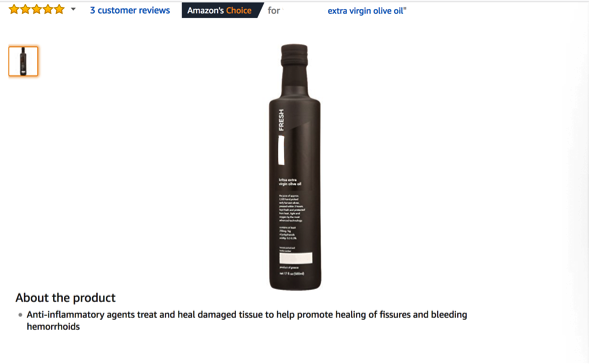Marketplaces can help brands add incremental sales — and build awareness. The more avenues on which the consumer sees your brand, the more recognizable it becomes. As your brand gains recognition, consumers will remember it and will be more likely to purchase.
But selling on marketplaces could backfire without careful execution. Keep a watchful eye on Amazon and the other marketplaces to control your brand. Fixing problems after the fact is a nightmare and, in some instances, impossible.
I have become very familiar with this because it involves a brand I’m working to improve.
This omnichannel brand is focusing on sales from its ecommerce site and from Amazon. Historically, the brand was more concerned with its overall retail coverage. It allowed other sellers to list its products on many online marketplaces.
Now that the market has shifted heavily toward ecommerce, the brand’s online presence has more weight. But these other sellers have already muddied the brand’s image. Occurrences like this are common for companies that are unfamiliar with the direct-to-consumer process.
In my example, the company didn’t control its brand on the marketplaces, and now it is trying to repair it.
… the company didn’t control its brand on the marketplaces, and now it is trying to repair it.
Sellers and Channels
When a brand sells its products in brick-and-mortar stores, it determines which of those stores to work with. Brands should follow the same model online. Don’t assume that a seller knows what it’s doing just because it has a store on Amazon. Some sellers generate sales volume solely by the sheer number of products they have listed.
Brands should also decide which marketplaces to control and which ones to open to other sellers. Once you allow third parties to sell your product online, you have created competition for your brand. If you control this process early on, you will be in better shape to take it over down the road, if necessary.
In short, be aware of your products’ online presence, whether you sell it directly or not.
Failure to control a brand online can lead to catastrophic outcomes. Allowing other sellers to list products without constraint can result in those products appearing in many channels, with many configurations.
The result is no brand consistency and a mishmash of product listings — outdated products, old labels, counterfeit products, and poorly represented products. It can even impact the brand’s legal standing. I’m aware of one instance, for example, when a brand involved its attorneys because another seller had registered the brand and claimed to be its rightful owner.
Minimum Prices
Marketplaces are competitive. The more sellers of your product, the bigger the fight for the sale. Without minimum advertised pricing, brands create a race to the pricing bottom. It will ultimately cheapen a brand.
It also affects perceived value. Without MAP, prices and configurations can be a mess. I’ve seen sellers offer a case of a product under a single-item UPC. This leads to much consumer confusion. It can also be very difficult to fix.
Product Information
Amazon and other marketplaces are massive databases. Product information in those databases is attached to a common element, such as a UPC. Once that information is established within a database, and it goes live for sale, it can be impossible to fix errors.
Consider this example from the Amazon marketplace. The product below is olive oil. Yet the “about the product” description says it is a “hemorrhoid cream.” Because so many other sellers had control of this product in the past, this mistake got carelessly mixed into the description. It has taken the brand nearly six months and thousands of dollars to regain control of its product (olive oil).

A brand allowed many sellers access to this bottle of olive oil. In the process, the oil was mistakenly described as “hemorrhoid cream.”
Importance of Marketplaces
Consumers will increasingly turn to online marketplaces for fast and convenient shopping. It is imperative that brands understand how to use these marketplaces to build their overall success.
It requires a concrete strategy. How to use these channels to build an overall brand and enhance its reputation? How to convert marketplace customers into loyal brand customers?
A brand should control how its products are shown and perceived. When the brand name is on the package, consumers will associate their experience with it.
Using online marketplaces, brands can elevate their presence and grow their business. The key is controlling who sells, how they sell, and where.